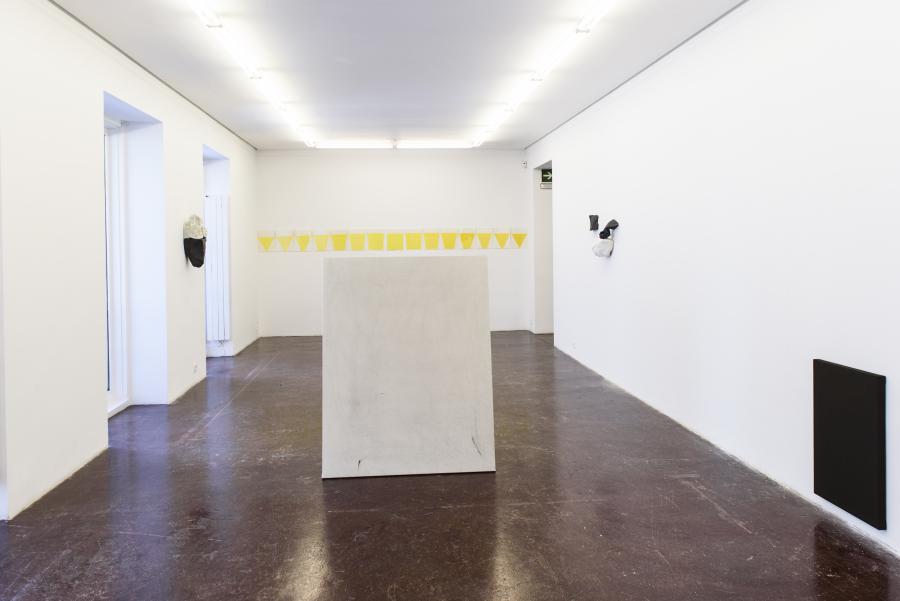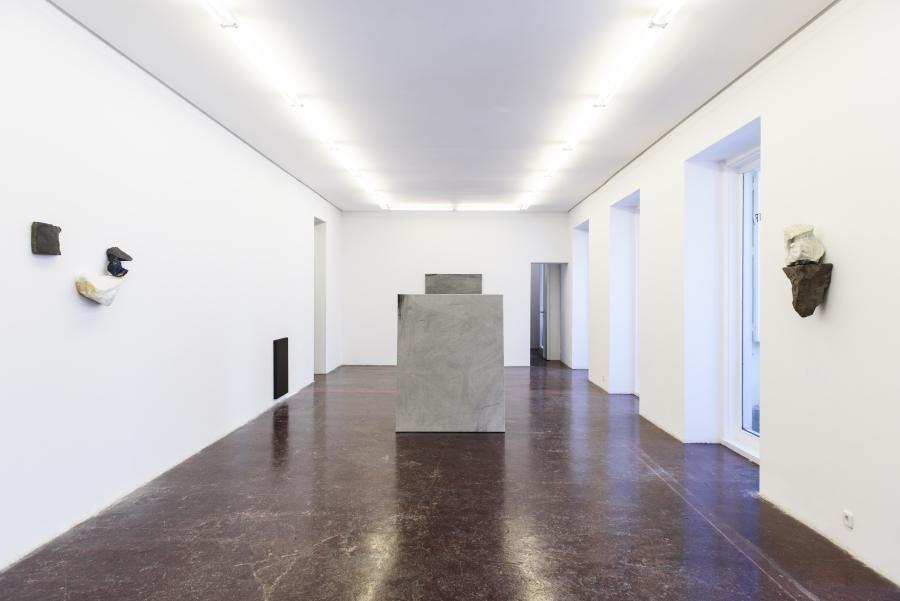mapa-suelo-paisaje. Irene Grau, Daniela Libertad y Clara Montoya.
Closing its 2018-2019 season, NF/ NIEVES FERNÁNDEZ presents mapa-suelo-paisaje, an exhibition with Irene Grau, Daniela Libertad and Clara Montoya. The set of artworks displayed behold a debate, upon multiple perspectives, on the fluidity of a territory as a concept that, in turn, establishes itself on a certain ontological stiffness.
A territory is usually associated to the idea of a space that is defined by its own limits or frontiers, and whose borders, at the same time, are defined by the sense of belonging or exclusion. Within the infinite attributions that a territory may have, it is often understood as physical or mental, geographic or imaginary, even idealized or unattainable, emerging from a psychological, political, social or cultural origin, within a collective or individual identity with a public or private nature. The territory itself is both established by the inflexibility of its boundaries and by the complexity of elements that define and compose it. Whereas it is the space one claims for oneself or imposes to others, gathering or segregating, or the land we decide to settle or even the mental zone we attribute a purpose, there seems to be a territory for each and every one.
This proposition assumes, therefore, the need to reunite a group of artworks that could travel over, delineate or erase these frontiers, browsing the limits of the exhibition space and opening a dialogue towards the free movement among artists, gallery and public.
In this sense, the works by Irene Grau, Daniela Libertad and Clara Montoya expand on different meanings and interpretations to the proposed idea and, using a diverse set of media and techniques, deepen the debate towards the understanding of the social constructions that underlie a wide landscape of relations.
Irene Grau (Valencia, 1986) presents ‘on what is left’, a project developed throughout one and a half years of strolling in the forests of Tourón, Galicia, devastated by the fires of October 2017. Starting from the desolation scenery resulting from the human actions that speculate with the land, the native woods and the production of timber, Irene aims to portray the reduction of the landscape in a pictorial form.
For that, she uses solely the ashes collected during this period and transfers them into canvases that methodologically respond to the idea of what is left. This produces a set of organic monochromes that, conceptually and formally, translate the relations between the men and their surroundings and, likewise, between the artist and a creative process marked by investigation and spatial action, by means of performative elements in its conception and execution.
All these paintings laying vertically on the ground connect, in parallel, with the flatness of the ground, the place where the ashes are deposited and, at the same time, with the structural verticality of the woodlands, now reduced to its remains. The painting is therefore what is left, not only from the forest but also from the pictorial process itself, in a constant material reduction that wears out the surface and drives it to something on the edge of being nothing. This is a gesture that, ultimately, rethinks the territories whereby the artworks are conceived, opening the possibilities of the public to connect, to contemplate and to question both the social and political processes and the artistic actions.
Clara Montoya (Madrid, 1974) is interested in the possibility to find a sensitivity in which a territory can be detached of a property notion. By questioning the processes of territorial demarcation defined as boundary between what is ‘mine’ or ‘yours’, the artist indicates an opportunity in which spaces belong to no one, away from the possessions and claims, in a state of just being by their own means. In this sense, the conquest and the control of a place, of the Earth or a landscape oppose to the idea that a land can be absolutely, revolutionarily and savagely free.
The group of works presented in the exhibition aim to relate the concept of territory with its most critical element, the matter. Working with essential elements, such as stones and metals, Clara Montoya revisits the liberation of territories and land through visual metonymies that confront the matter with its own notches by time, natural processes and the artist’s intervention.
The works by Daniela Libertad (Mexico City, 1983) strain the notions of territory with a delicate perception, both intangible and ordinary. The use of different media allows the artist to confront immaterial elements and geometrical forms with mundane objects and the actual body of the artist. This leads to exploring not only the mystical and ethereal characters of such components, but also of concrete aspects such as weight, density and touch. In those exercises of tension, the artist invigorates the mixture of apparently opposing fields, between the physical and the mental or the abstract and the figurative towards a precarious balance among the parts that, eventually, informs us on the fragile and ordinary condition of our own awareness of a day-to-day poetry.























